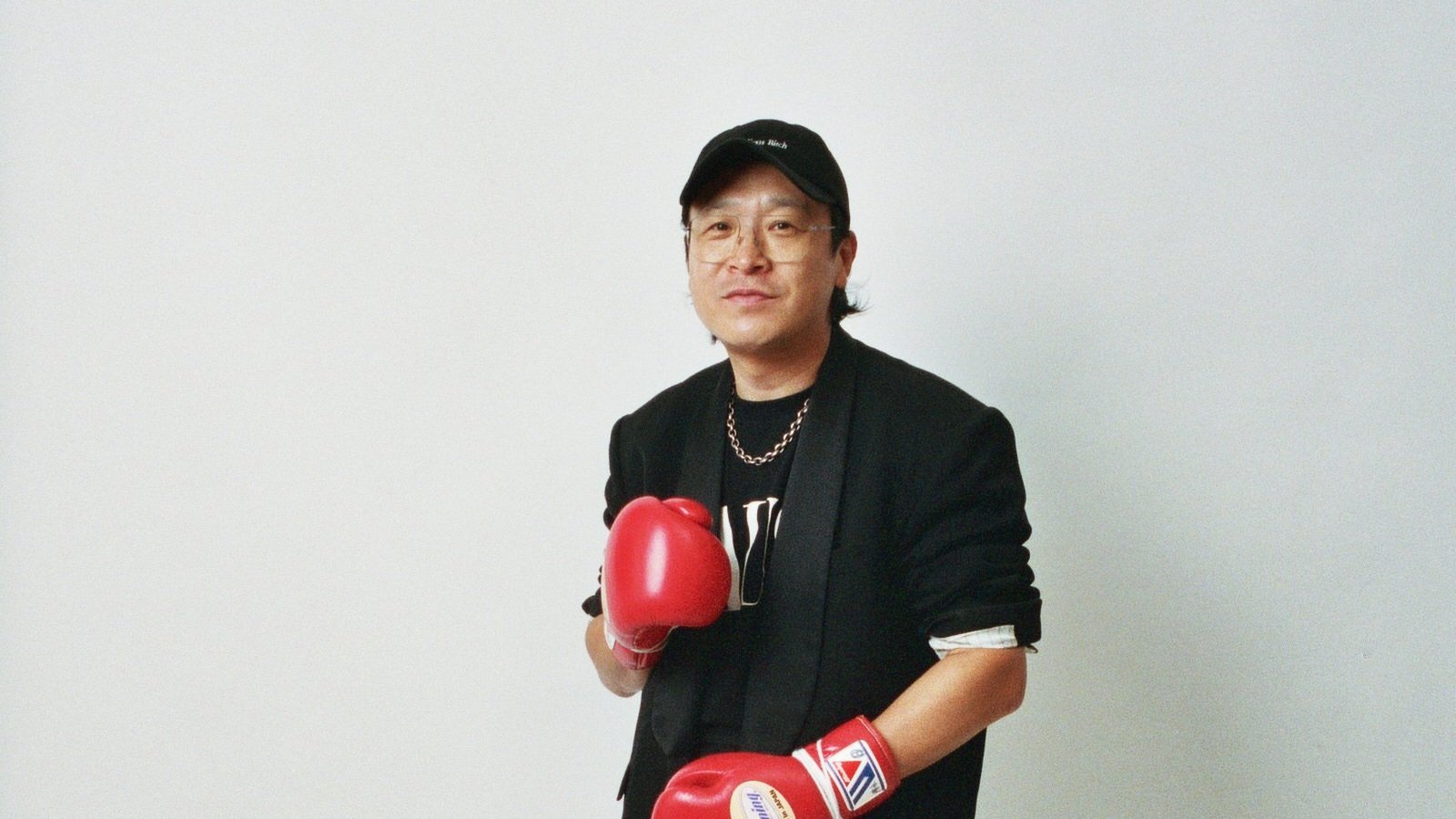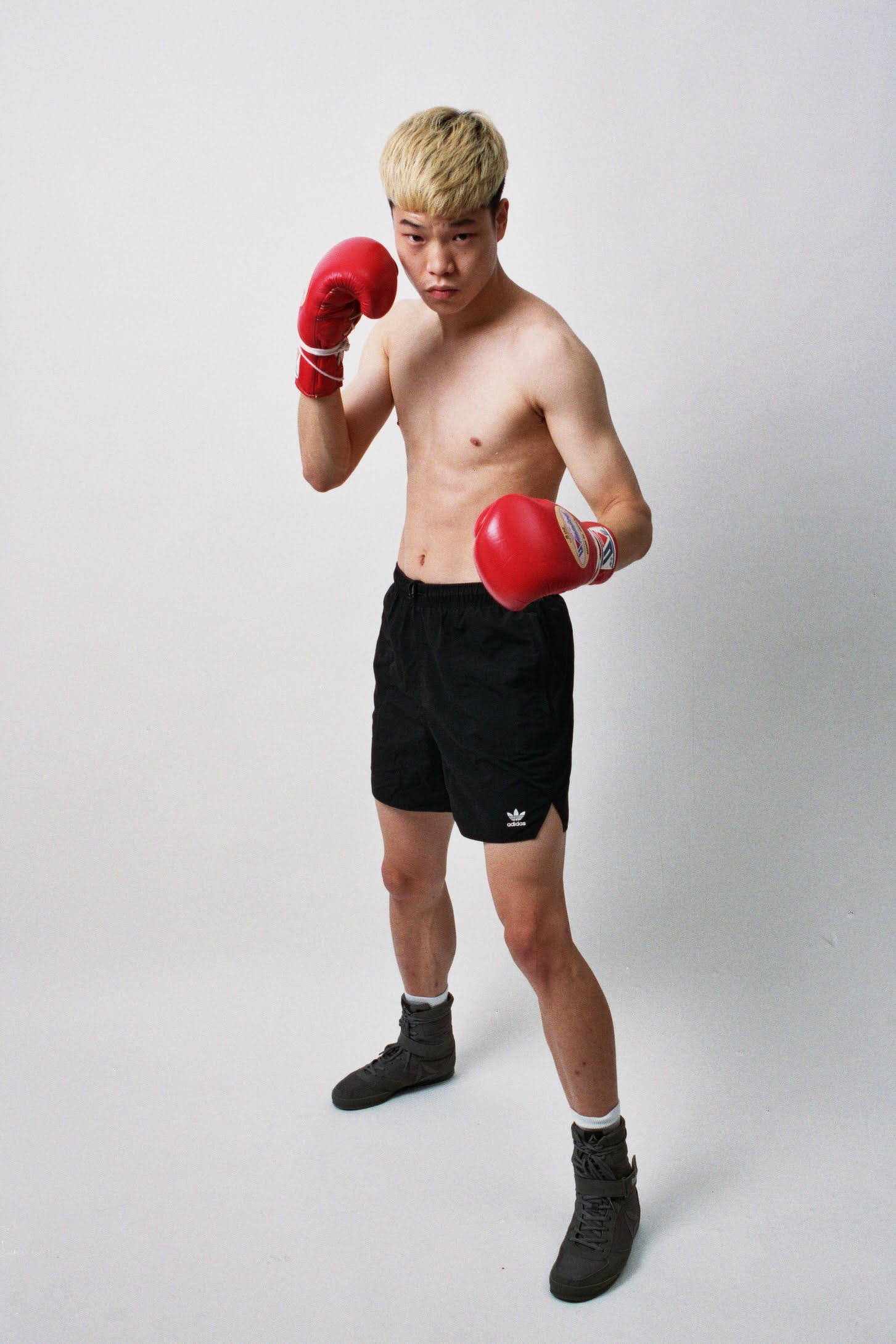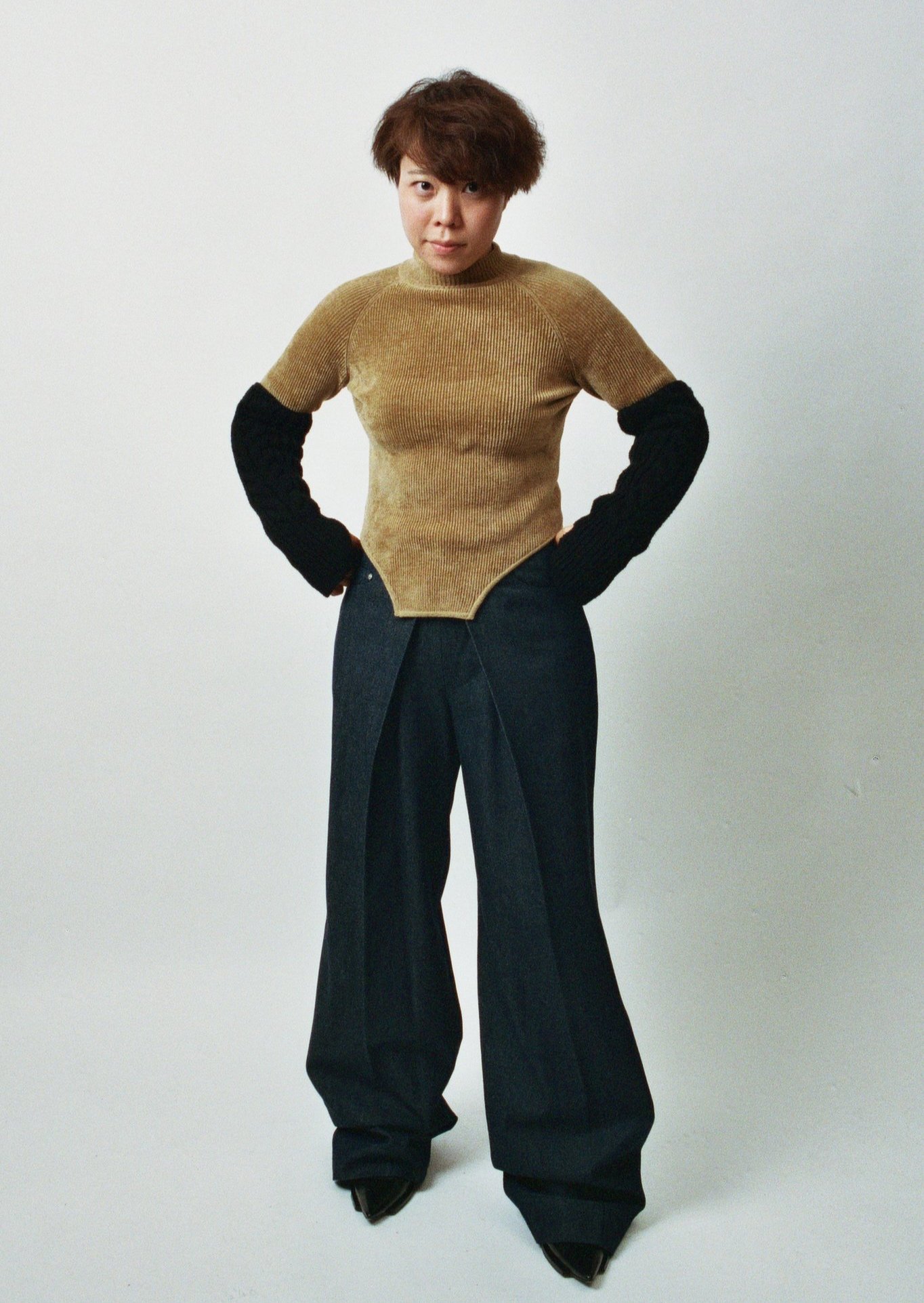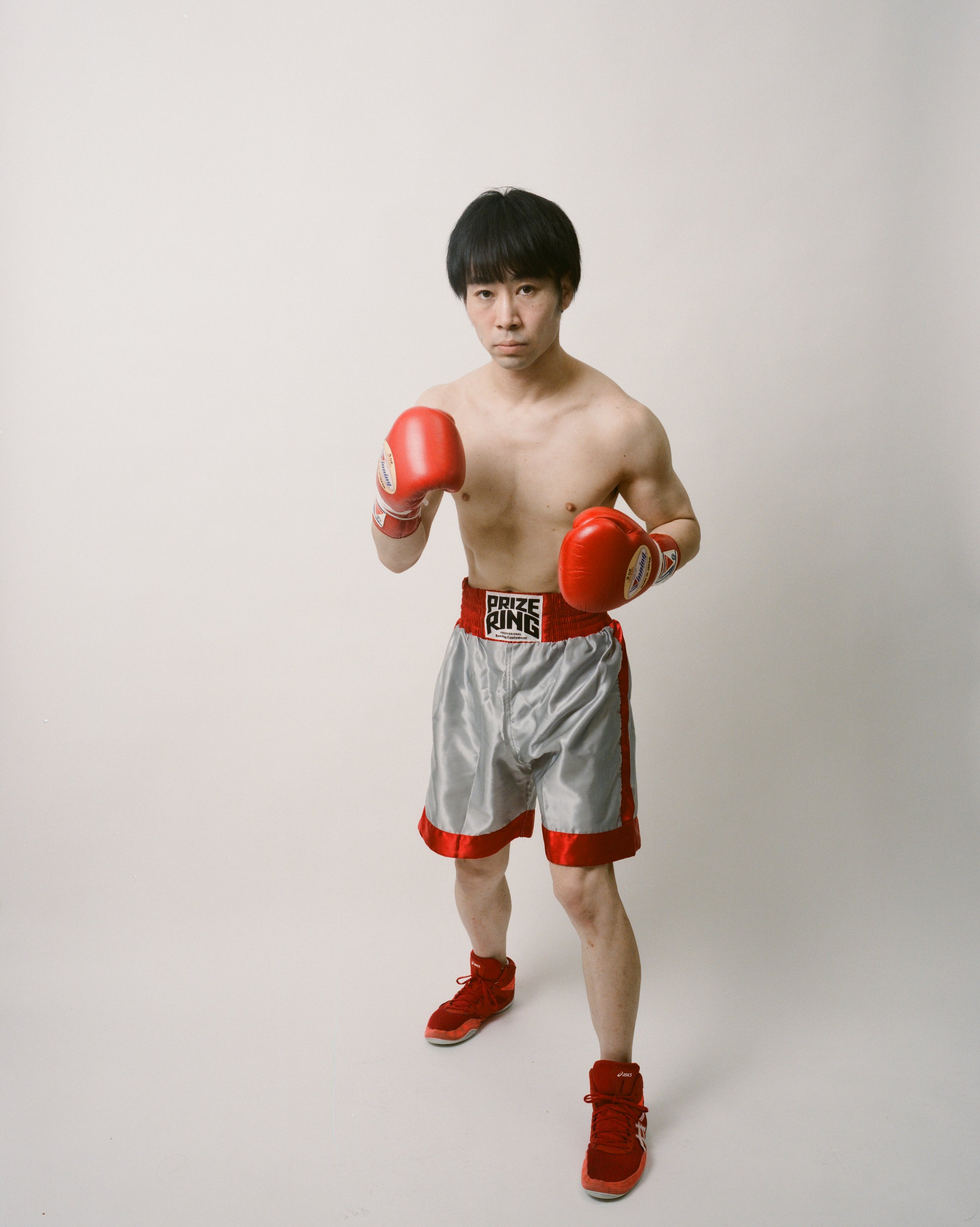Arashi Yanagawa: A Designer Truly Ahead of His Time

From revolutionizing the art of modern tailoring to establishing one the most influential fashion labels in Japan, Arashi Yanagawa is not only a designer but a whole character, a style icon, a fashion visionaire, and nonetheless, a Sabukaru favorite.
Arashi Yanagawa, before being known today as the designer of Japanese clothing label JOHN LAWRENCE SULLIVAN, used to pursue a professional boxing career at a young age. He was so talented at boxing, to the extent that by the end of high school, he was scouted by a Japanese university, which eventually led to him becoming an Olympic candidate for Japan.
Arashi’s fashion career is just as exciting as his career in sports. He started working on fashion around 2003, and with no formal education, he followed his strong sense of fashion and decided to give it a shot—a decision that lasted well over 20 years. Arashi has a strong vision for fashion that is simply just ahead of his time, designing sharp, robust silhouettes for men before they were popularized today by social media. Arashi single-handedly challenged the Japanese fashion scene with his distinct design language, silhouettes, and daring visuals, establishing his label as the always cutting-edge, strong, and proactive fashion powerhouse it is today.
We teamed up with photographer Federico Radaelli to create visuals starring boxers from Kaneko GYM -where Arashi currently trains at- styled in JOHN LAWRENCE SULLIVAN outfits, exclusively for today’s article.
Hereby we proudly present to you our interview with the former professional boxer and fashion trailblazer Arashi Yanagawa!
Can you briefly introduce yourself to anyone that may not know you yet?
I’m Arashi Yanagawa, and I design clothes for JOHN LAWRENCE SULLIVAN. Born and raised in Hiroshima prefecture, I was influenced by my father to pick up boxing when I was 12 years old, and proceeded to become both the Japanese Inter-High School Competition mosquito division champion and the National Athletic Meet light fly division champion. I then got scouted by Chuo University and won the fly weight division title in the Japanese National Championships in my senior year, being chosen as a contender for the Olympics. I was part of the National team for the entirety of my college years, so I got to travel around the world back then.
Those were some of my career highlights as an amateur, but I dropped out of college in my senior year after my chances of boxing in the Olympics were ruined, and was then scouted by Yoko Gushiken to go pro as a boxer. I professionally boxed for 4 years, but I didn’t win any big titles, and decided to pursue fashion design after.
It seems like boxing was a huge part of your life before coming into the fashion industry. Can you tell us a little bit more about how your father came into the picture to begin with?
It’s a bit of a weird story, but my father used to box when he was in high school, too, but he decided not to go to college and lived his life around boxing, whether it’s coaching his high school team or refereeing matches around Hiroshima. He eventually got to be the head coach of the National Athletic Meet, but that was also sort of volunteer work. I was a preschooler when my dad took me to all the boxing matches he refereed on the weekend, so I pretty much grew up around boxing and many boxing industry people too. I didn’t study much as a kid, so my father gave me two choices when I was about a 5th grader. He said, “you either stick to studying or take up boxing and get a scholarship for college,” and since I really didn’t like the idea of studying, I told him I would rather take up boxing. To be honest, I didn’t take boxing that seriously when I first started though (laughs).
Did you ever think you were going to be able to make a living off boxing when you first started?
I never thought I was going to do as well as I did as an amateur, so I thought it would be great if I got to be part of the National Championships, but when I did start I realized I was actually mentally and physically built for boxing and proceeded to do pretty well. I boxed at the Asian Junior Championships when I turned 17 and got a straight knockout match to win a silver medal, so I got more confident with my boxing, and naturally started to dream about being part of the Olympics.
Did you practice any other martial art other than boxing?
Just boxing, really. I was never really that into combat sports nor martial arts, and I was never that stereotypical punk that walked around town looking for fights. I was more into music and fashion growing up, but somehow it lead me to my boxing life.
Which genre of music did you listen to most growing up? What are you listening to now?
I’ve been listening to a lot of Post Punk and New-wave. As a high school student I went to a lot of different clubs to listen to Jazz. Acid Jazz was huge back then, so I tracked back the roots, and started collecting vintage Jazz records. The internet wasn’t a thing yet, so I used to bid in auctions through mail. I would get letters about certain records, so if the bidding price is at JPY 3,000 I’d send a letter back with a higher bid. I was heavy into that through high school and college, but I’m into very different genres of music these days.
So this is where the punk inspiration came from in your collections?
Yup (laughs).
Can you tell us a little bit more about your time at Shirai Gushiken Sports Gym?
This photo with Yoko Gushiken is from when I held my press conference for my first pro debut, but a handful of newspapers ended up showing up since I had a pretty good record during my amateur years.
Where’s this photo from?
This other one here is pretty crazy. I went to Kazakhstan as part of the National team expedition, and this guy next to the head coach is former chairman Akira Yamane from the Japanese Boxing Federation (laughs). I’m sure Japanese people know him in many ways. (laughs)
This one’s from when I went to Thailand for the Asian Junior Championship, but I actually wasn’t able to win the title.
During my time with the National team, I went to many places and each place I’ll get a jersey and shoes with the national Japan flag on it. There’re so many unforgettable memories to it, but somehow my father just gives them away to everyone without my permission. In the end I don’t have any items at home!
More so than being regarded for his legacy in boxing, Yoko Gushiken is more recognized for appearing in variety shows where he is known as a funny character. How was he like when you were signed to his gym?
Actually, he was always like that character from back then. He truly was a great boxer in his heyday, but I don’t know if he was such a good coach. I think it’s hard for geniuses like him to communicate what they’re thinking.
YOU MENTIONED HOW YOU WENT PRO DURING YOUR SENIOR YEAR IN COLLEGE, BUT ARE THERE ANY SPECIFIC MOMENTS YOU CAN REMEMBER AS TO WHY YOU DECIDED TO PURSUE A CAREER IN FASHION?
Like I mentioned, I was always into fashion as a kid, but I decided to pursue boxing because of my father’s influence. I still went to Harajuku shopping at boutiques and thrift stores, and I always had this vision of opening my own store in Hiroshima or being around fashion, but it just took longer than expected because I went pro after dropping out of college. Once I did turn pro, I realized it would be rather difficult to go back to my hometown and open up a shop, so I decided to look for something I could do in Tokyo after I retired, instead.
I loved London, so I went on a trip to the U.K. with a friend when I was still a boxer. Places like Camden Market and Portobello Road Market were exciting at the time, and I remember experiencing culture shock seeing how people styled themselves there. People wore blazers and long coats over their Adidas track suits, and it gave off a similar energy like BUFFALO from back then. Compared to Japan where people dressed according to the unspoken rule of style and fashion, people from London dressed as they pleased, and I thought that was cool. Whether you wore branded jackets or trash bags for pants, the mix of different styles were refreshing, and it inspired me to open a thrift store in Japan to sell clothes from there.
I used to collect leather shoes as a high schooler, and I was majorly into brands like Alden and Church’s. I had 4 different pairs from Alden at some point, so it’s safe to say I was a bit of a nerd back then. We wasn’t that rich family, but I pulled money from different places to buy a pair of Rolex Submariner and Explorer, and I remember begging my grandma to buy them (laughs). So as you can imagine, I was very much into very traditional fashion, and I wore suits and ties as a high schooler.
So your obsession with tailoring for your brand was inspired by your high school self??
Yup. Since then, my uncle first told me about the Savile Row jacket one of The Rolling Stones members wore, and I instantly fell in love.
Gwangyoung Gim
We also understand your uncle was quite fashionable. What was his style like?
Yeah, but he wasn’t necessarily serious about it. Both my dad and my uncle were taxi drivers themselves, well.. They were the type to come out of “Taxi Driver (1976)” starring Robert Deniro and buy the same jacket he wore the next day after they watched the movie.
You first debuted during the Autumn/Winter 2003 season. Tell us a little bit about what the first steps into the fashion industry were like back then.
I had no idea what to do, so at first I made a one and only jacket. That was my start. I used to drink out in Nakameguro, as Nakameguro is what you call "My activities area", before it became posh and all. I asked and learned from the fashion people that hung around the area and also asked how to make clothes. I would call one of my friends who worked at a boutique to ask to display my clothes, and at the end I even used to hang my clothes without permission at this boutique called Lobby in Nakameguro, telling them “sell this one!” back in the days. I just struck a deal and paid them a commission. I also asked people to introduce me to factories that would make my clothes. I didn’t even know how exhibitions were a thing in the fashion industry, so I made 10 jackets and asked stores around to hang them. I eventually started to get the hang of it and started to host exhibitions and network with people from around Japan.
What were the clothes like when you first started making them?
I still have some of them, but I used to make jackets that had no shoulder pads. I didn’t have the necessary tools to make proper ones, so I‘d just leave it out and make only jackets.
Being one of the few people who stuck with high fashion styles during the height of street wear in Japan, what was the fashion scene like back then?
I was hanging around Nakameguro a lot in my early 20s, but it was much more local back then before it got so popular. A lot of weirdos hung around there, and there used to be this small cafe where all the interesting people came to. Most of my time was spent there, so to be honest I didn’t really know what was going on in the Ura-hara area. Since I was also quite the weirdo who dressed like I was from Camden Market, way far from those Ura-hara scenes. I used to wear this hat and a leather jacket covered in this long Chanel chain, way too different from the street wear culture. It’s really hard to explain, but back in the days there were so many weirdos in Nakameguro in a good way.
Did you have favorite stores/restaurants from back then?
There used to be this place called Organic Cafe, and they were sort of the godfathers of the cafe boom happening in Tokyo now. They had a lot of Eames and mid-century furniture, and they weren’t really busy when they first started, but eventually people caught on and you couldn’t even get a seat without lining up toward the end. Tohachi is another izakaya I used to go to a lot, and their original location was right below my first office actually. So these would be my two best places to go too.
Increasingly considered as one of the premiere fashion brands coming out of Japan, it seems a lot of people have yet to discover your background in boxing. Can you tell us a little bit about the meaning behind the brand’s name?
Sorry if this bursts anyone’s bubble, but there’s not a deep meaning to it. I just liked English culture so it was natural that I wanted my brand to sound English, but my college teammate thought of it. I asked him to think of a name, and he brought up John Lawrence Sullivan. I thought it sounded cool so I went with it, but I later on found out he was actually an American with Irish-descent (laughs). I already did the paperwork to file the name, I quite like it so I just kept the name as it is.
It’s clear how much you love English culture, but is it right to assume your interest for foreign cultures piqued when you started traveling around the world during your boxing career?
Yeah. I used to go to Sloane Square a lot, and I even remember being moved when I first visited Vivienne Westwood’s World’s End. I couldn’t speak a lick of English when I first visited, but I kept on coming back and even stayed for a good whole month just because I loved it there so much.
From the elegant tailoring to the dark artfulness, your signature style is dripping all over your outfit today. Where do you draw inspiration when making clothes?
I try to take notes or pictures of anything that piques my interest. I’m always thinking about how I can make my clothes for the upcoming season more exciting, so I refer back to the notes and pictures as I design, coming up with new sketches and cuts. Sometimes, some of these things just clique, and I build on top of that, but in the end, the theme for the season is something that I give priority on. In my head, a lot of ideas whether it be from sports or movies pop up, but in one beat everything connects, creating one cohesive story. So, I don’t set restrictions or boundaries in the start of the design process, rather drawing and pulling ideas from different places on the way.
Do you still get inspired by boxing?
The stoicism of boxing is as good as my brand’s identity. My will for creation was informed by my boxing career, so it’s something that will always be a part of my brand, JOHN LAWRENCE SULLIVAN. Weirdly enough, fashion shows are quite similar to boxing matches. Prep time feels like an eternity, yet the show itself can go by the snap of a finger. It’s ephemeral, yet it doesn’t let you soak in that feeling because you have the next fight to deal with; the never ending prep is quite similar, I’d say.
Do you ever “lose” in fashion shows?
It is not about measuring fashion shows with win/loss ratios, but I think you can win or lose against yourself. Through the challenge, you’ll get unworthy comments but your heart knows best. This is why you can’t lie to yourself. Even if the show is presentable, the designer feels the most pain, in being untruthful to oneself.
JOHN LAWRENCE SULLIVAN is anticipating its 20th birthday, but looking back, are there any particular shows that left an impression on you?
My debut collection is an unforgettable one. I didn’t know anything, but I proceeded to do it simply because I wanted to, and the concept itself was symbolic of boxing; the blue corner, signifies a challenger fighter. Anyhow I wanted to do a show, so I assembled a ragtag team of people to run a show. At that time, this was already a challenge, so I gave a message for my first look wearing a blue London rider’s jacket, and blue boxing trunks with fringes on, having the model wear these huge boxing boots. Throughout the show I had some of my tailored pieces shown off, having this image of boxer and the referee and the ring side are the mafia watching the match, and by the end, the story closes with this satin jacket complete with a bow tie shown as if he was the ringside announcer to cap the show off (laughs). I also had told the models to bump shoulders in the narrow runway to give them attitude, because boxing is a fight after all. I wanted to express that boxing mood in the show. I remember the adrenaline rush was just insane throughout. There was a lot of excitement.
What has changed stylistically since your debut?
I guess I’ve become better at communicating my ideas better over the years. It was clear how my messaging was all over the place when I first started, but as I’ve grown, these ideas found their place in seasons. Some people prefer the aggressiveness from the earlier years, while others rather like the sophisticated styles I’ve developed recently, but as a designer, I want to grow and make even better things, so I suppose that’s what's changing my perspective of fashion.
What was your impression when you first showcased your collection outside of Japan?
I thought it could’ve gone better (laughs). I got a little bit comfortable since it was also around the time the Japanese media started building me up, so my designs from the begging till to foray abroad ended up being a little bit too cohesive. Going out of home turf, it’s important that you communicate 100% of what exactly you want to say with your collection, and although I think I have grown as a designer, at the same time I needed to directly send a message like I had when I first started. Now I’m more conscious of designing the collection, being more aggressive and getting more energetic.
It’s clear that you have drawn a lot of inspiration from different subcultures, but what are things you’re into that people may not know about?
Different subcultures? like Kinji Fukasawa films. “Battle Without Honor and Humanity (1973)” is one of my favorites, and it’s a story based on this place called Kure in Hiroshima prefecture. The story then moves on to Hiroshima city, where I was actually born (laughs). I always loved mafia films with Al Pacino, and Fukasawa’s “Battle Among Honor and Humanity” remains my absolute favorite. It’s clear how directors like Takeshi Kitano were inspired by this film. “Wounded Angels (1974-1975)” is also one of my bibles (laughs). The styling that spanned from preppy tailored jackets to vintage street style fashion was just amazing to me.
Do you have any favorites from Takeshi Kitano films?
I love “Outrage (2010),” but I also love “Sonatine (1993).” It makes me feel so thrilled, I like the subtle feeling.. The posters are super cool too.
Surely you must’ve designed your own wild trunks during your boxing career.
I did make one for every match, but they were quite simple. From pink ones to velvet pairs, I did make a lot of them, but notably, I designed one as an homage to English culture, slapping the union jack and rocking a mohawk for my last professional fight. Funnily enough, a friend of mine found a Youtube clip talking of my last fight, and it was a short interview of my opponent who went on to do pretty good internationally. He was recognized for defeating me. I was happy what they call super amateur elites (laughs).
What do you want people to look at when they buy their first piece at JOHN LAWRENCE SULLIVAN?
Honestly the jacket. I don’t think any other designer is really obsessed over tailoring as much as I am. Other than order made suiting. As far as prêt-à-porter, I’m confident in the quality and dynamism we put in the rules of tailoring, so first of all, I want people to try on my jackets and feel how they fit. You could find the definite difference.
In 2005, we shot a movie, and we got a bunch of skaters to wear my suiting clothes that I made with this stretchy material, and very tight silhouettes. We got a van, stuffed all 7 skaters, busted open the door and skated around the Shibuya Koen Dori. I had a friend who used to publish a skateboard magazine, so I asked him to cast everyone from models to videographers, and we shot a video until the cops showed up! This was before I debuted my first runway show. After a few times of doing my exhibitions I just wanted to do something exciting, so I decided to take over Shibuya during the day.
What sort of advice can you give the younger generation?
I never formally studied fashion, but I’ve been in this for more than 20 years now. If there’s one thing I can tell anyone, I advise against setting restrictions when starting out. Just move and think about how you’re going to do it later. You might end up taking the longer route, but that way, I think you grow tougher. If you’re seriously going to pursue a career in fashion, you have to have thick skin. You’re going to be thrown a lot of heinous words and a sprinkle of praise when you first debut your collection, but it’s important you have the mentality to block the negativity and stay truthful to your vision.
Produced by Bianco BIanco
Producers Marta Espinosa, Adrian Bianco, Federico Radaelli
Photographer Federico Radaelli
Styling by Dominika Szmid
Models from Kaneko GYM
Interview By: Casey Text By: Polo
Special Thanks: Kaneko GYM & Hanna Kita













